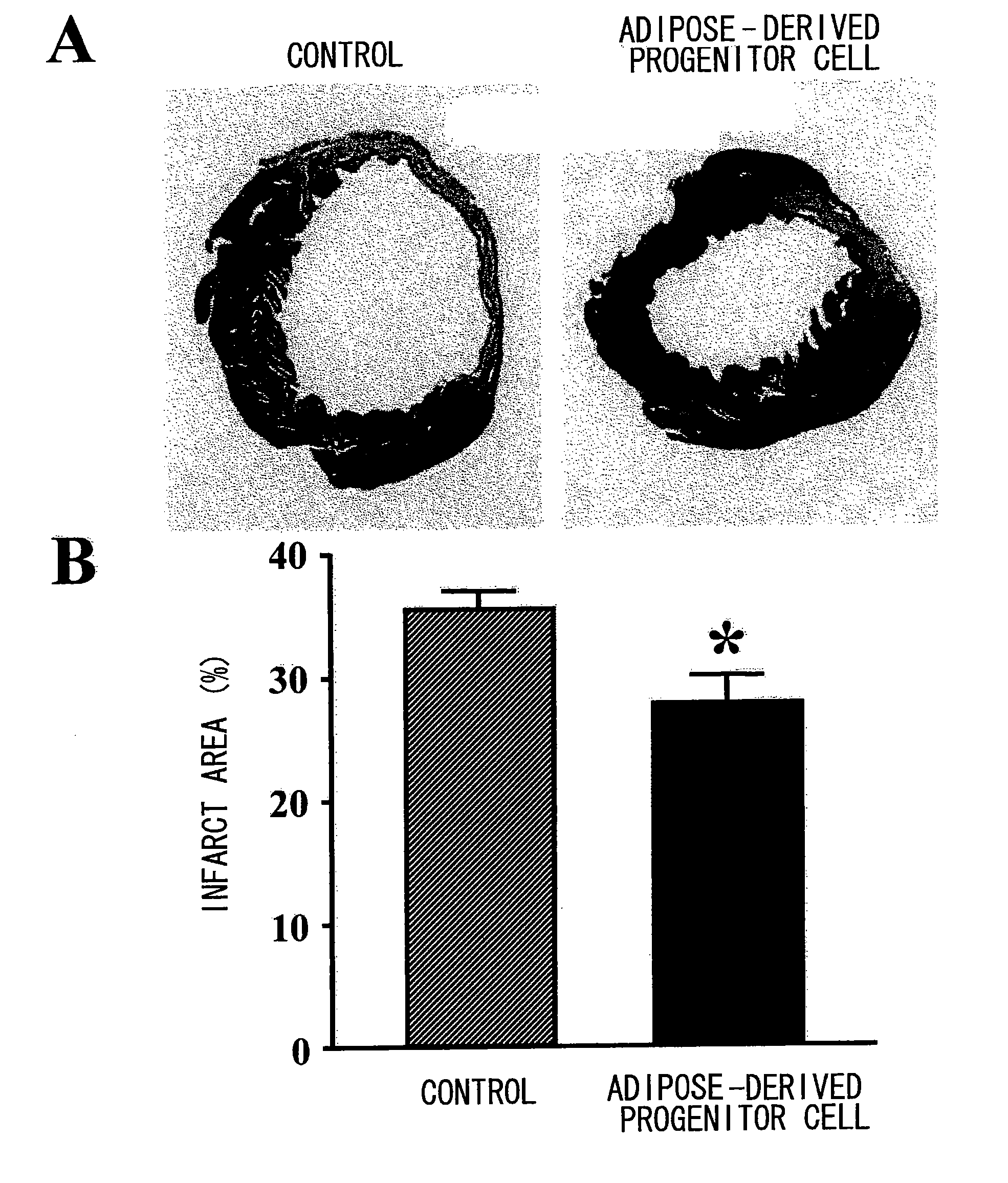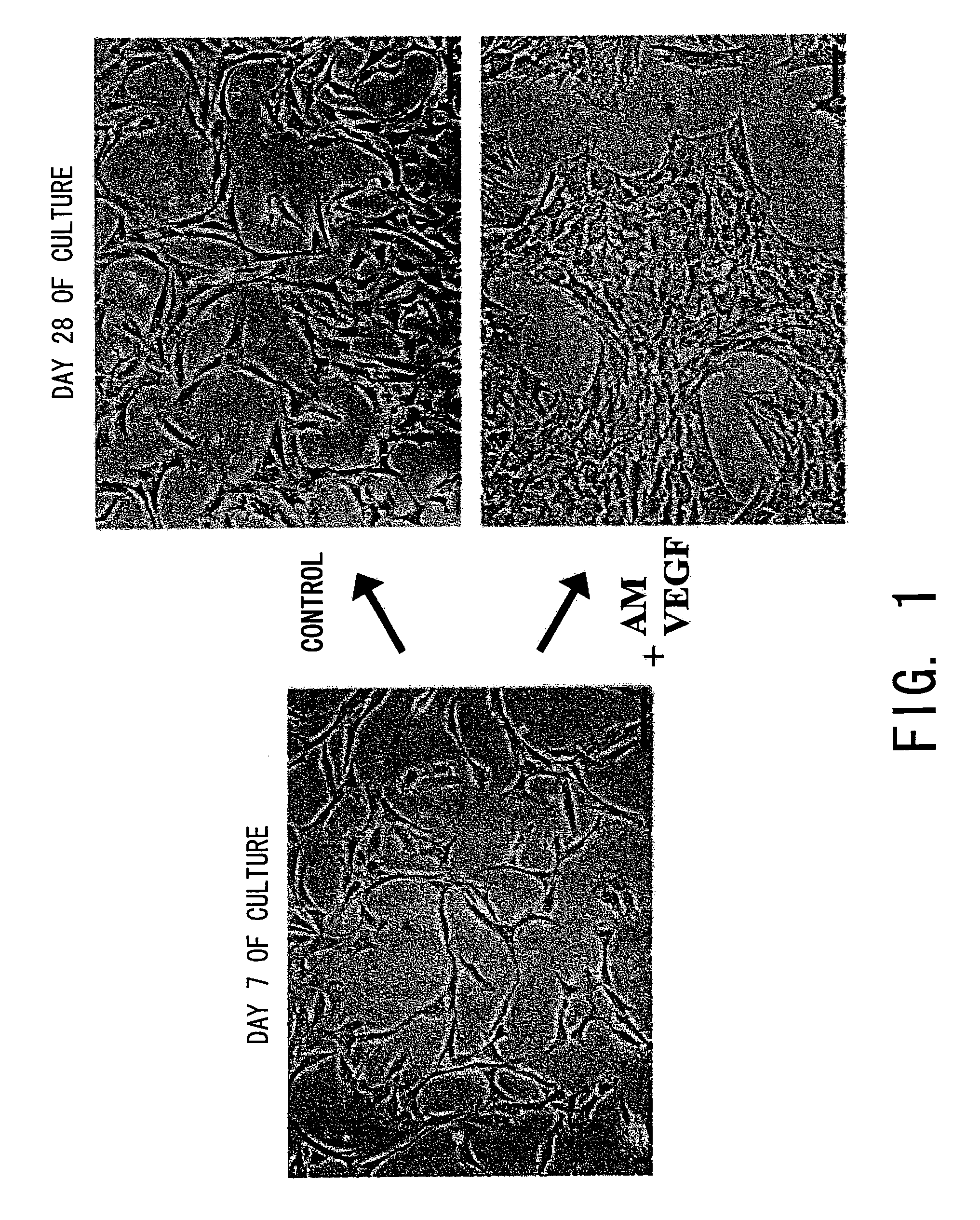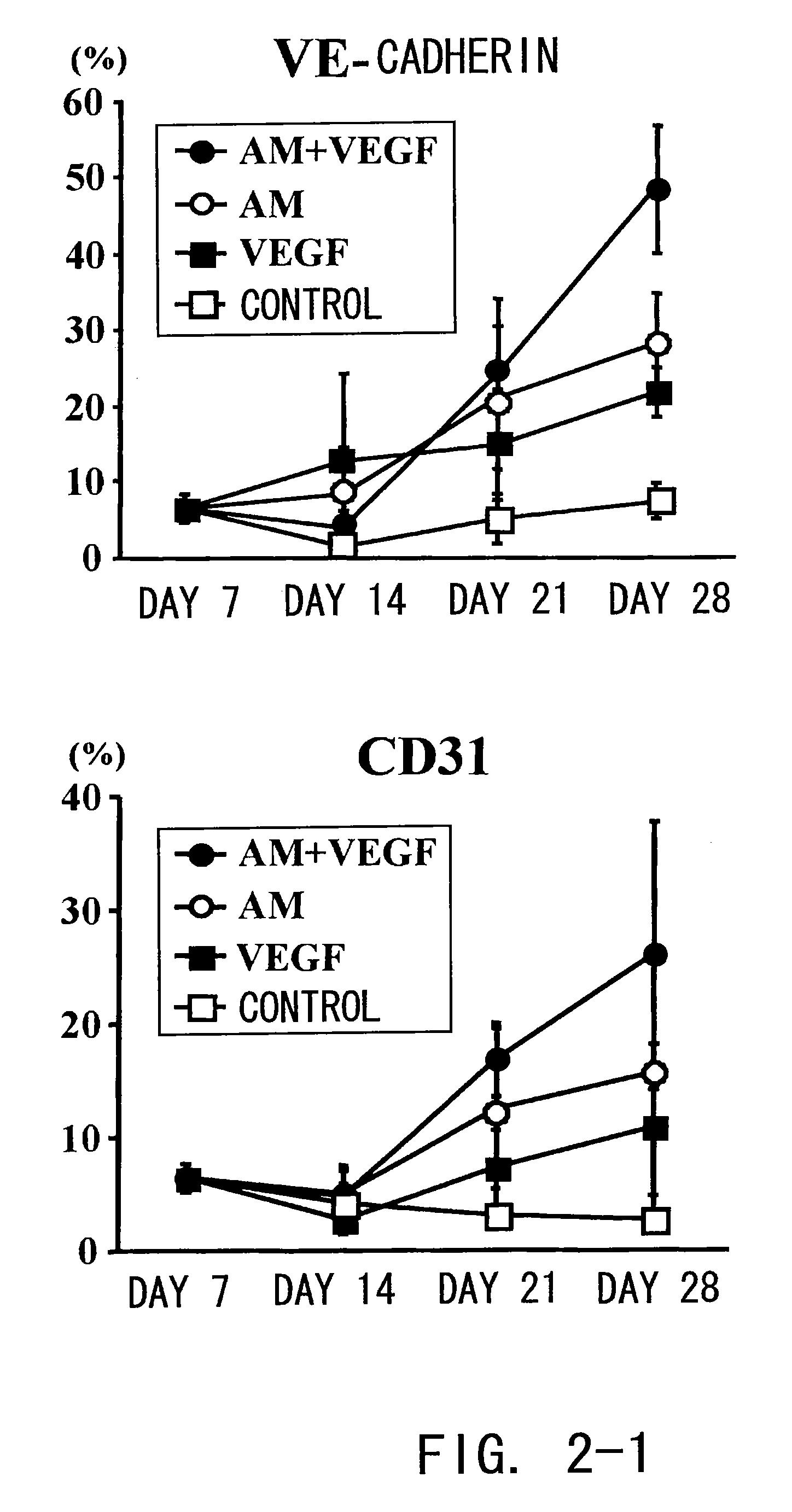Fat-Derived Progenitor Cell and Use Thereof
a progenitor cell and fat-derived technology, applied in the field of fat-derived progenitor cells and their use, can solve the problems of not being established as a therapeutic agent, difficult to maintain the required number of these cells, and no effective therapeutic method for restoring necrotised myocardium, etc., to achieve the effect of restoring mct-induced pulmonary hypertension, reducing pulmonary capillary density, and improving survival time of mct rats
- Summary
- Abstract
- Description
- Claims
- Application Information
AI Technical Summary
Benefits of technology
Problems solved by technology
Method used
Image
Examples
example 1
Isolation and Culture of Adipose Stromal Cells from Adipose Tissue
[0102]Male Wistar rats weighing 90 to 110 g were used for the present Example. The rats were operated to extract subcutaneous adipose tissues from tiny incisions in both sides of the abdomen. The adipose tissues were homogenated and put in a phosphate-buffered saline containing 0.1 mg / ml type I collagenase (Worthington Biochemical). The mixture was gently stirred to effect a digestion treatment at 37° C. for one hour. Undigested fragments were removed by filtration using a 25 μm filter. Then, centrifugation (at 2000 rpm for 10 minutes) was performed to isolate mature adipocytes from the pellet of adipose stromal cells. As previously reported (Bjorntorp P, et al. J Lipid Res. 1978; 19:316-324), the supernatant was removed, and the cell pellet was resuspended, seeded in a normal culture dish, and cultured in an α medium containing 10% fetal bovine serum (FCS), heparin, and antibiotics.
[0103]On day 7 of the culture, adhe...
example 2
Analysis by Fluorescence-activated Cell Sorter
[0105]The endothelial phenotype of the cultured cells were confirmed by proving the existence of endothelial cell-specific markers such as VE-cadherin, CD3 1, and vWF. Specifically, at the time points of day 7, 14, 21, and 28 of culture, adipose stromal cells of each group were analyzed by fluorescence-activated cell sorting method (FACS; FACS SCAN flow cytometer, Becton Dickinson). These adipose stromal cells were incubated at 4° C. for 30 minutes with mouse monoclonal antibodies against CD31 (clone TLD-3A12, Becton Dickinson), vascular endothelial (VE)-cadherin (clone F-8, Santa Cruz), CD45 (clone OX-1, Becton Dickinson), and CD34 (clone ICO115, Santa Cruz), respectively, and with rabbit polyclonal antibodies (Dako) against von Willebrand factor (vWF). A permeabilization buffer (Santa Cruz) was used for intracellular staining of VE-cadherin. Antibodies having the same isotype were used as a control.
[0106]These results showed that the m...
example 3
Measurement of Neovascularization in Matrigel
[0112]The formation of vessel-like structure by adipose stromal cells, that is, whether or not adipose stromal cells induce neovascularization, was evaluated in a basement membrane matrix preparation (matrigel). The cultured adipose stromal cells of each group were seeded in a 12-well plate coated with a matrigel (Becton Dickinson) at 2.0×105 cells / well, and incubated at 37° C. for 6 hours. Vessel formation was observed using an optical microscope, and the images were imported into a computer system. The pixel analysis of the vessel-formed area was performed as previously reported (Miura S, et al. Arterioscler Thromb Vasc Biol. 2003;23:802-808). Briefly, an image of this area was converted into a black-scale and image processing was performed to calculate total pixels. The number of pixels was measured in five different areas of each sample, and the mean value thereof was obtained.
[0113]As a result, in the AM group and the VEGF group, 1.9...
PUM
| Property | Measurement | Unit |
|---|---|---|
| concentration | aaaaa | aaaaa |
| diameter | aaaaa | aaaaa |
| diameter | aaaaa | aaaaa |
Abstract
Description
Claims
Application Information
 Login to View More
Login to View More - R&D
- Intellectual Property
- Life Sciences
- Materials
- Tech Scout
- Unparalleled Data Quality
- Higher Quality Content
- 60% Fewer Hallucinations
Browse by: Latest US Patents, China's latest patents, Technical Efficacy Thesaurus, Application Domain, Technology Topic, Popular Technical Reports.
© 2025 PatSnap. All rights reserved.Legal|Privacy policy|Modern Slavery Act Transparency Statement|Sitemap|About US| Contact US: help@patsnap.com



